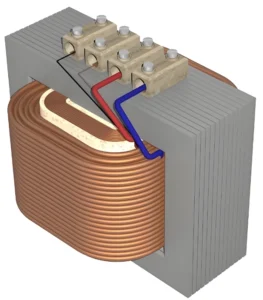
Introduction
Brief overview of magnetic flux in transformer cores
Cores magnetic flux size plays a crucial role in the operation of transformers, defining the magnitude of magnetic field lines circulating within the transformer core. As alternating current traverses the primary winding of a transformer, it initiates a dynamic magnetic field, inducing voltage in the secondary winding via electromagnetic induction. This flux, determined by the core’s magnetic properties, facilitates the transformation of voltage levels between the windings.
Importance of understanding factors influencing magnetic flux size
Understanding the factors influencing magnetic flux size is crucial for optimizing transformer performance and efficiency. Various factors, such as core material, winding configuration, operating frequency, and load conditions, can affect the magnitude and distribution of magnetic flux within the transformer core. By comprehending these factors, engineers can design transformers with the desired magnetic characteristics, minimize energy losses, and ensure reliable operation under diverse operating conditions. Thus, a thorough understanding of the factors influencing magnetic flux size is essential for achieving optimal transformer design and performance.
Factors Affecting Cores' Magnetic Flux Size
Core material composition
The material composition of transformer cores significantly influences magnetic flux size. Different core materials, such as silicon steel, amorphous metal, and ferrite, have varying magnetic properties, including permeability and hysteresis loss. Silicon steel, for example, is commonly used due to its high magnetic permeability and low core losses, making it suitable for high-efficiency transformers. Amorphous metal offers even lower core losses, particularly at higher frequencies, while ferrite is preferred for applications requiring high-frequency operation, such as inductors and transformers for switching power supplies.
Core geometry and design
The geometry and design of transformer cores play a crucial role in determining magnetic flux size. Factors such as core shape, cross-sectional area, and winding configuration influence magnetic flux density and distribution within the core. By optimizing core geometry and design parameters, such as stacking arrangement and winding technique, engineers can minimize magnetic flux leakage, improve energy efficiency, and enhance transformer performance.
Operating frequency
Operating frequency directly affects magnetic flux size in transformer cores. At higher frequencies, such as those encountered in high-frequency transformers and switch-mode power supplies, magnetic flux experiences greater eddy current and skin effect losses, leading to increased core heating and reduced efficiency. Therefore, transformer cores designed for high-frequency operation must be optimized to mitigate these losses and maintain stable magnetic performance.
Temperature effects
Temperature fluctuations can notably influence the magnetic flux size within transformer cores. When temperatures rise, core material permeability might decrease, resulting in lower magnetic flux density and higher core losses. Conversely, lower temperatures could elevate core permeability, potentially saturating the core and impacting transformer functionality. Hence, transformers need robust design to endure temperature variations and operate within defined limits for optimal magnetic flux size and performance.
Magnetic field strength
The strength of the magnetic field applied to the transformer core directly influences magnetic flux size. Higher magnetic field strengths result in increased magnetic flux density within the core, leading to higher induced voltages and currents in the windings. By controlling the magnetic field strength through appropriate design and operating parameters, engineers can optimize transformer performance and efficiency while ensuring reliable operation under varying load conditions.